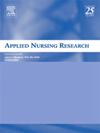开发和测试患者决策辅助工具,供医疗保健提供者使用,以促进痴呆症患者的提前护理计划
IF 2.7
4区 医学
Q1 NURSING
引用次数: 0
摘要
在长期护理机构中推广预先护理计划(ACP)是一项重大挑战,特别是对于痴呆症患者及其家人在做出知情决定方面。为了解决这个问题,需要专门针对这一人群的临终医疗决策量身定制的患者决策辅助(pda)。本研究旨在开发pda,以协助医疗保健提供者与残疾人士及其家属讨论ACP临终关怀决策。采用混合方法设计,通过三个连续的步骤来开发pda。首先,pda的设计:这包括制作一本小册子、一份清单和六个视频,这些视频是根据现有的ACP法规和文献证据制作的。初步设计由专家评估内容效度。第二,再验证:使用患者教育材料评估工具对pda进行再验证。这包括用于评估原型的alpha测试和用于评估可理解性和可操作性的beta测试。第三,现场测试:在现场测试设置中,使用决策准备量表来衡量临终关怀决策的准备程度。经Alpha检验,pda具有较高的信度值,范围为0.85 ~ 1。在可理解性和可操作性的beta测试中,信度得分分别为0.91-0.97和0.96-1。在临床测试中,所有的参与者都报告说他们为决策做好了充分的准备,并发现pda有助于促进ACP。开发的pda在为服务用户做决策准备方面显示出很强的可理解性、可操作性和有效性。它们是医疗保健提供者支持残疾人及其家属的临终关怀决策的宝贵工具。本文章由计算机程序翻译,如有差异,请以英文原文为准。
Developing and testing of patient decision aids for the use of healthcare providers in facilitating advance care planning for patients with dementia
Promoting advance care planning (ACP) in long-term care facilities presents significant challenges, particularly for people with dementia (PWD) and their families in making informed decisions. To address this, patient decision aids (PDAs) specifically tailored to end-of-life medical decisions for this population is needed. This study aimed to develop PDAs to aid healthcare providers in discussing ACP for end-of-life care decisions with PWD and their families. A mixed-method design was used to develop the PDAs through three sequential steps. First, design of the PDAs: This involved creating a brochure, a checklist, and six videos informed by existing ACP regulations and literature evidence. The initial design was evaluated for content validity by experts. Second, re-validation: The PDAs underwent re-validation using the Patient Education Materials Assessment Tool. This included alpha testing to assess the prototype and beta testing to evaluate understandability and actionability. Third, field testing: The Preparation for Decision Making Scale was used to measure readiness for making end-of-life care decision in a field test setting. Alpha testing of the PDAs demonstrated a high reliability score ranging from 0.85 to 1. In beta testing for understandability and actionability, the reliability scores were 0.91–0.97 and 0.96–1, respectively. In a clinical setting where the PDAs was tested, all participants reported being well-prepared for decision-making and found the PDAs beneficial in facilitating ACP. The developed PDAs exhibits strong understandability, actionability, and effectiveness in preparing service users for decision-making. They are valuable tools for healthcare providers to support end-of-life care decisions for PWD and their families.
求助全文
通过发布文献求助,成功后即可免费获取论文全文。
去求助
来源期刊

Applied Nursing Research
医学-护理
CiteScore
4.50
自引率
0.00%
发文量
65
审稿时长
70 days
期刊介绍:
Applied Nursing Research presents original, peer-reviewed research findings clearly and directly for clinical applications in all nursing specialties. Regular features include "Ask the Experts," research briefs, clinical methods, book reviews, news and announcements, and an editorial section. Applied Nursing Research covers such areas as pain management, patient education, discharge planning, nursing diagnosis, job stress in nursing, nursing influence on length of hospital stay, and nurse/physician collaboration.
 求助内容:
求助内容: 应助结果提醒方式:
应助结果提醒方式:


